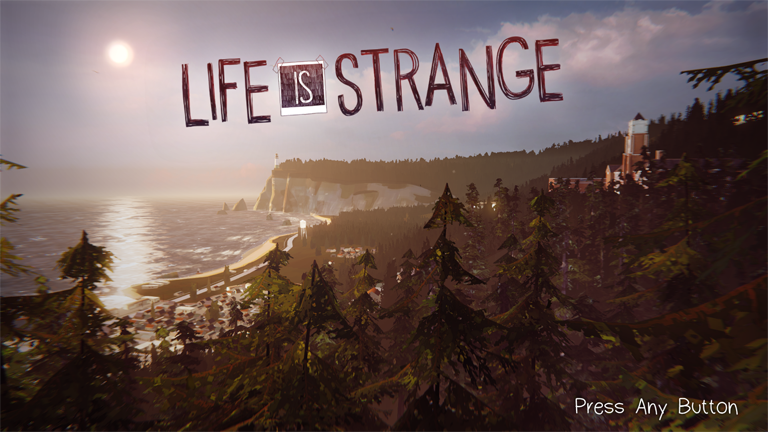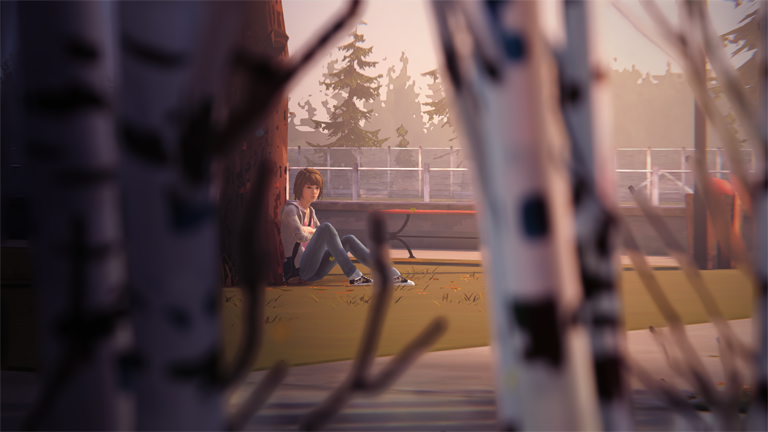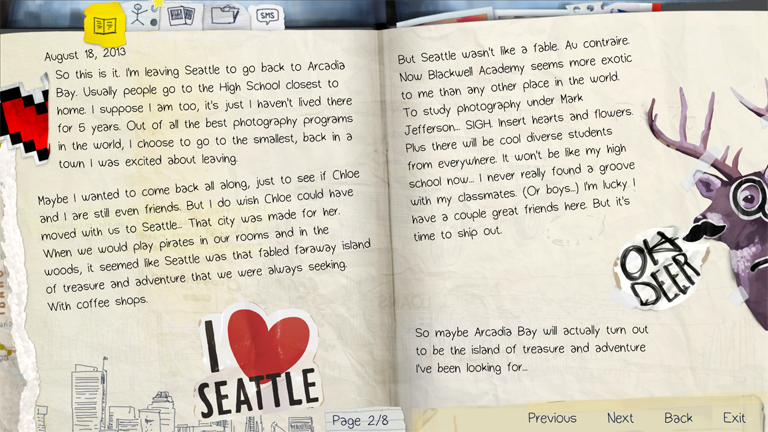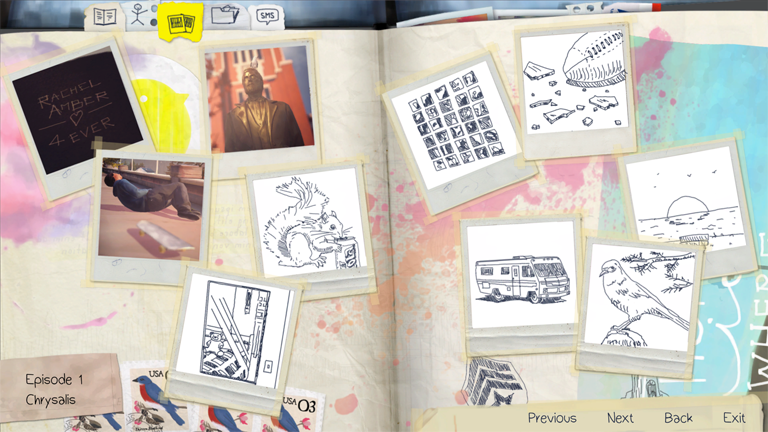With my firmly established declaration of "adventure games don't have enough game-play to be appealing", it might seem strange (pun intended) that the genre keeps weaseling its way onto the list of games I actually like. But, in the case of Life is Strange, at least, it is an anomaly I can easily justify.

Any game, at its most basic, is a mixture of narrative, mechanics and execution (in that order) and – where Dontnod Entertainment's 2015 release is concerned – the three were intentionally aligned to produce something appealing. For the dev, Life is Strange was a turning point, of sorts: a departure from making "big games with large teams and long production cycles," in the hope of making something more intimate, yes, but also innovative. And, boy — did they!
Narrative
Life is Strange tells the story of Max Caulfield – a girl with a knack for photography who moves back to Arcadia Bay, Orgeon, only to witness a tragic event which makes what would otherwise be a regular teenage drama jump the rails and set off for truly intriguing horizons.
To (kinda) not spoil the story (which is every adventure game's mainstay), let's just say the simple premise of a young girl returning to her hometown also deftly incorporates a detective story, romance, (limited) time travel/causality and – eventually – even alternate worlds.

Little Max Caulfied, you see, can rewind time (but more on that in a minute).
Although the aforementioned combination of themes might seem like an odd mix, Dontnod did a great job of making it all work fairly seamlessly. Every element of the story is interwoven with great skill, so that what oddness it contains sneaks up on you gradually – like slowly submerging into a warm, comfortable bath.
The fact the narrative is set in a quaint, forlorn little town populated by intriguing, well-designed characters; that the protagonists (Max and her best friend Chloe) are eminently likeable; and that the pacing is balanced enough to move right along, if you want it to, while – at the same time – giving you enough pause to explore the (quite interesting) setting make for a story you want to experience, while innovative mechanics ensure you won't be doing so in the same, trope-y point-and-click way adventure games are known for.
Mechanics
You control Max with the keyboard from 3rd person to walk or jog and interact with objects via the mouse. Fantastic presentation to the contrary, the core of the game sticks close to its point-and-click adventure roots for a fairly conventional experience, with limited points of interest/interactivity on any given screen.

On top of that solid (if overused) foundation, however, Dontnod incorporated a few very neat mechanics for added interaction and extra reasons to replay the game.
First, is Max's aforementioned "super power" of rewinding time. At (almost) any point in the game, you can hold down RMB to spool back disliked interactions, missed opportunities or unfavorable outcomes for another shot at Getting Things Right. And – the best thing? Far from being a mere gimmick used to move the narrative along (or, y'know, backwards), the ability is central to the plot and well-enough thought out to cause some truly unforeseen situations.
The rewind also adds a new dimension to puzzle solving, allowing you to see (and possibly undo) what might at first seem like good ideas after you are privy to what they lead to. Coming with its own rules and limitations, it's a fine example of Design Done Right and the beating heart of the Life is Strange experience.
Second, are a branching dialogue and (to an extent) branching plot structure, which take Max's key actions into consideration when deciding how the game will unfold. While there aren't that many (between 10 and 15 in each of the game's five episodes), they are substantial enough to have a noticeable effect on the narrative.
In a genre that is largely linear (butt your head against the wall until you solve a puzzle and the story moves forward), it's a nice departure from the norm and makes for a more intriguing experience that may alter drastically from one play-through to the next.

Third are Max's diary/scrapbook and phone, which provide much needed background to the story and (accurately) illustrate the social life of a young woman, allowing you to text with parents and friends on top of the usual interactions. While the addition might seem peripheral, at best, it rounds out Max's character, giving the player access to her innermost thoughts, outlooks and concerns. Also — the scrapbook pages (much like the rest of the in-game art) are simply pretty.
Last, but by no means least, there are Max's photos: a set amount of opportunities per episode to take an interesting snap with her archaic Polaroid. It doesn't really affect game-play in any measurable way, but does add an extra reason to play again (if you missed a given photo); or use the rewind mechanic (which is sometimes essential to set up a given shot).
Execution
The game's focus (and the puns keep coming) on photography perfectly integrates with its style which I can only describe as beautiful.
Between a simplified art style and lifelike animation, superbly framed camera angles, dramatic lighting, great sound design and dedicated VO work, Life is Strange is one of those games that (in my mind, at least) bridge the gap between entertainment and art. There is honestly nothing I can think of that Dontnod could have done better on the presentation front...

The same cannot be said of the programming, however. Running, what else, but Unreal Engine graphics, Life is Strange is, for the most part, pretty well optimized, but (even on a beefy rig) does encounter some pop-in or the odd stutter every now and again – especially after a new area is loaded.
True to its console ambitions, the game also only allows for autosaves at fixed points, which is fine if you have the time to play, but can be a pain if you're caught short – forcing you to replay entire sections if you have to quit in between save nodes. In a game with no real inventory or stats, implementing a manual save should have been easy enough to do and (for me, at least) represents an unnecessary oversight.
Finally (and this is fault of the genre, rather than the game), while Life is Strange delivers some incentive to replay (to pick a different path, experience a missed interaction or snag that elusive squirrel photo), it simply doesn't possess deep enough game-play to keep you interested for more than one or two (admittedly fun) playthroughs.
Summation
On the whole, Life is Strange is an easy game to recommend to anyone – not just adventure game afficionados. Between smooth gameplay, an intriguing story, interesting mechanics and characters that are easy to like, it delivers a consistently pleasing experience despite dealing with some surprisingly dark subject matter.
If you like conventional stories with a bit of a twist, enjoy a good mystery, were curious what it would be like to be an aspiring photographer or want to see Oregon in the best imaginable light, give Life is Strange a try. What the game lacks in depth, it more than makes up for with great design, a compelling narrative and fantastic production values.
Also, it has some of the most adorable animated critters ever. I don't know about you, but being able to watch a squirrel frolic without having to get outta bed is a big plus in my book!
